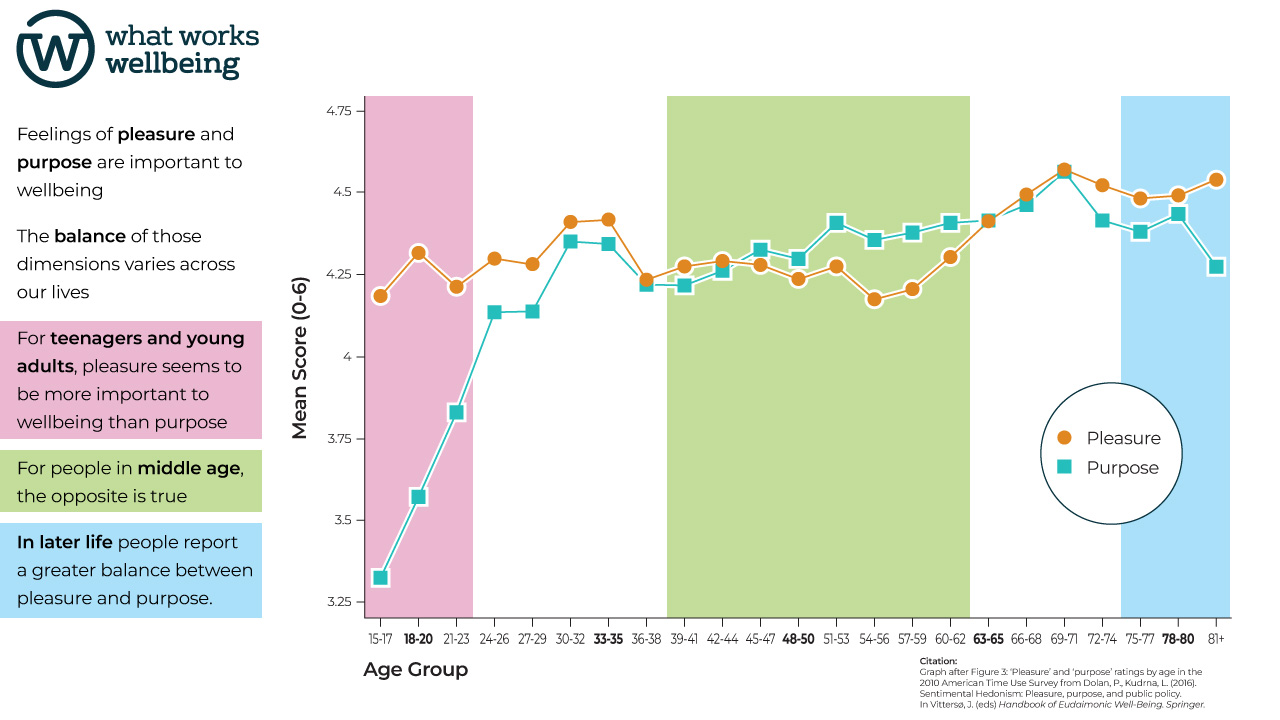Pleasure and purpose ratings by age
Downloads

The graph uses data from the 2010 American Time Use Survey, which asked a cross-sectional sample of 13,000 people to keep a diary of yesterday’s activities and rate how they felt.
It shows the aggregated answers by age of two questions that measure purpose (“From 0 to 6, how meaningful did you consider what you were doing? 0 means it was not meaningful at all to you and a 6 means it was very meaningful to you.”), and pleasure (“From 0 to 6, where a 0 means you were not happy at all and a 6 means you were very happy, how happy did you feel during this time?”).
Adolescents and people in their early 20s were far more likely to rate their activities as pleasurable than purposeful, and had lower levels of experienced purpose than any other group. Those in mid life rated slightly more activities as purposeful than pleasurable. People a few years after retirement reported a balance of equal amounts pleasure and purpose in the things they did during an average day.
Dolan, P., Kudrna, L. (2016). Sentimental Hedonism: Pleasure, Purpose, and Public Policy. In: Vittersø, J. (eds) Handbook of Eudaimonic Well-Being. International Handbooks of Quality-of-Life. Springer, Cham. https://doi.org/10.1007/978-3-319-42445-3_29
Downloads
![]()
[gravityform id=1 title=true description=true ajax=true tabindex=49]
